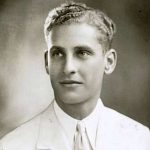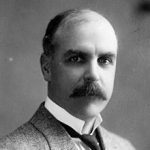killer
 When a vicious killer is caught, sometimes the townspeople lose control of their emotions and take matters into their own hands. While it is a little less common these days, people would sometimes storm the jail to execute the prisoners themselves. Often it was thought that justice would not be served in the court system. People fear the possibility that the killer might get off and be back out in society again. These days, it is pretty hard to storm a jail, but jails weren’t as secure then, as they are now.
When a vicious killer is caught, sometimes the townspeople lose control of their emotions and take matters into their own hands. While it is a little less common these days, people would sometimes storm the jail to execute the prisoners themselves. Often it was thought that justice would not be served in the court system. People fear the possibility that the killer might get off and be back out in society again. These days, it is pretty hard to storm a jail, but jails weren’t as secure then, as they are now.
On November 9, 1933, Brooke Hart was abducted by two men in his own Studebaker. His family received a $40,000 ransom demand and, soon after, Hart’s wallet was found on a tanker ship in a nearby bay. The investigative trail led to John Holmes and Thomas Thurmond, who implicated each other in separate confessions. Both acknowledged, that Hart had been pistol-whipped and then thrown off the San Mateo Bridge. After Hart’s body  washed ashore on November 25, a vigilante mob began to form. Newspapers reported the possibility of a lynching and local radio stations broadcast the plan. Not only did Governor James Rolph reject the National Guard’s offer to send assistance, he reportedly said he would pardon those involved in the lynching. Now, when you have a governor who is on the side on the lynch mob, you have a volatile situation.
washed ashore on November 25, a vigilante mob began to form. Newspapers reported the possibility of a lynching and local radio stations broadcast the plan. Not only did Governor James Rolph reject the National Guard’s offer to send assistance, he reportedly said he would pardon those involved in the lynching. Now, when you have a governor who is on the side on the lynch mob, you have a volatile situation.
On November 26, 1933, thousands of people in San Jose, California, stormed the jail where Thomas Thurmond and John Holmes were being held. The angry mob converged at the jail and beat the guards, using a battering ram to break into the cells. Then, Thurmond and Holmes were dragged out and hanged from large trees in a nearby park. Contrary to the way most of us think, when our emotions aren’t raw, the public seemed to welcome the gruesome act of vigilante violence. After the incident, pieces of the lynching ropes were sold to  the public. Though the San Jose News declined to publish pictures of the lynching, it condoned the act in an editorial. Seventeen-year-old Anthony Cataldi bragged that he had been the leader of the mob but he was not held accountable for his participation. At Stanford University, a professor asked his students to stand and applaud the lynching. Perhaps most disturbing, Governor Rolph publicly praised the mob. “The best lesson ever given the country,” said Governor Rolph. “I would like to parole all kidnappers in San Quentin to the fine, patriotic citizens of San Jose.” I understand the anger, but not the method. While the two killers might have deserved the death penalty for their crimes, this was not the way it should have happened. Nevertheless, I guess justice was served…even if it was vigilante justice.
the public. Though the San Jose News declined to publish pictures of the lynching, it condoned the act in an editorial. Seventeen-year-old Anthony Cataldi bragged that he had been the leader of the mob but he was not held accountable for his participation. At Stanford University, a professor asked his students to stand and applaud the lynching. Perhaps most disturbing, Governor Rolph publicly praised the mob. “The best lesson ever given the country,” said Governor Rolph. “I would like to parole all kidnappers in San Quentin to the fine, patriotic citizens of San Jose.” I understand the anger, but not the method. While the two killers might have deserved the death penalty for their crimes, this was not the way it should have happened. Nevertheless, I guess justice was served…even if it was vigilante justice.
 As I continue to read about my Great Great Aunt Tessie, Teresa Elizabeth Spencer Davis, I continue to be amazed at the kind of people she and her husband, William Jonathan Davis were. They raised nine children, losing a set of twins at birth, which would have made eleven children. Aunt Tessie would go on to outlive seven of her eleven children, passing away on April 21, 1944 at the age of 79 years. Her husband, William, who had been raised on the high seas, after losing both of his parents by the time he was seven, and then his Uncle Walter stepped up to raise him and his brother on his merchant ship, passed away on August 11, 1925 at the age of 69 years, having been proceeded in death by five of his children.
As I continue to read about my Great Great Aunt Tessie, Teresa Elizabeth Spencer Davis, I continue to be amazed at the kind of people she and her husband, William Jonathan Davis were. They raised nine children, losing a set of twins at birth, which would have made eleven children. Aunt Tessie would go on to outlive seven of her eleven children, passing away on April 21, 1944 at the age of 79 years. Her husband, William, who had been raised on the high seas, after losing both of his parents by the time he was seven, and then his Uncle Walter stepped up to raise him and his brother on his merchant ship, passed away on August 11, 1925 at the age of 69 years, having been proceeded in death by five of his children.
In life they were a well known and much respected couple in the community of Rushville, Nebraska. One of their prized possessions was a genuine Surrey with the fringe around the top, and a driving team of high spirited Sorrel horses. They were active in the community literary, debates, Sunday School, picnics, and Fourth of July celebrations at Palmer’s Grove. They were members of modern woodman and royal neighbors. William served on school and election boards, was elected Justice of the Peace, performed a marriage ceremony, and helped bury several people, acting as both mortician and preacher, He was supervisor of the Magnesium Road built north of the Colclessor Bridge. They were often called to neighbors homes in times of sickness and emergencies. The young son of Emile Sandoz, called them when his father was shot. William gave first aid until the doctor arrived, then formed a posse to help run down the killer. People traveling by team and wagon from the South Sandhills spent many nights in their home and were always welcome. They also allowed many peddlers to  stay at their home, and the peddlers always left a gift as a token of their appreciation.
stay at their home, and the peddlers always left a gift as a token of their appreciation.
They were all gifted musicians. Aunt Tessie played the organ and sang beautifully. The children played the organ, violin, accordion, mouth harp, horns, and drums. In fact, they formed an orchestra and played at dances all over the area. They even had an organ that could be folded up like a valise in the back of a buggy. They often traveled miles to play all night until dawn. I don’t know about you, but their life wears me out, just thinking about it, much less living it, but to them, it just seemed like the normal way to live.

